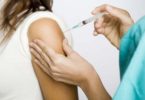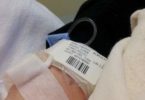What's in this article?
What Are Pubic Lice?
Also called crab lice or “crabs,” pubic lice are parasitic insects found primarily in the pubic or genital area of humans. Pubic lice infestation is found worldwide and occurs in all races, ethnic groups, and levels of society.
Causes of Pubic Lice
Pubic lice are found mostly in teenagers. The lice are often spread during sexual activity.
Rarely, pubic lice can spread through contact with objects such as toilet seats, sheets, blankets, or bathing suits (that you may try on at a store).
Animals cannot spread lice to humans.
Other types of lice include:
- Body lice
- Head lice
You are at greater risk for pubic lice if you:
- Have many sexual partners
- Have sexual contact with an infected person
- Share bedding or clothing with an infected person
Symptoms of Pubic Lice
Pubic lice causes itching in the area covered by pubic hair. Itching often gets worse at night. The itching may start soon after getting infected with lice, or it may not start for up to 2 – 4 weeks after contact.
Other symptoms can include:
- Skin reaction that causes skin to turn bluish-gray in color
- Sores in the genital area due to bites and scratching
What do pubic lice look like?
Adult pubic lice are very small (2mm long) and aren’t easy to see. They’re a yellow-grey or dusky red colour and have six legs.
Pubic lice are sometimes known as crabs because they have two large front legs that look like the claws of a crab. These are used to hold onto the base of hairs.
The lice lay their eggs (nits) in sacs that are stuck firmly to hairs and are a pale brownish colour. When the eggs hatch, the empty egg sacs are white.
Although pubic lice and lice eggs are small and difficult to see, they may be visible in coarse hair anywhere on your body (apart from hair on your head).

Contagiousness of Pubic Lice
Pubic lice can live 1 to 2 days away from a human body. But contrary to what some people may think, they’re rarely transmitted from furniture or toilet seats because the lice that fall from the body are usually injured or dying. Unlike fleas, lice can’t jump from person to person. And they can’t be contracted from animals.
Treatment of Pubic Lice
Topical creams or lotions containing permethrin (for example, Lyclear cream or Quellada lotion) and applied to the affected area are the most commonly recommended treatment. See your doctor, pharmacist or sexual health centre for further advice.
Permethrin should not be applied to the eyelashes. If this area is affected, discuss an alternative treatment such as petroleum jelly with your doctor.
Treatment tips
Treatment for public lice will be more effective if a few simple guidelines are followed, including:
- Usually the whole body from neck to toes should be treated, including the perineum (the skin between the vagina and the anus) and the anal area.
- Read and follow the instructions on the medication carefully.
- The skin should be cool, clean and dry when the cream is applied.
- Apply the cream and leave it on overnight. It can be washed off the next morning. You don’t need to apply the cream to head hair.
- Wash clothing, towels and bedding at the same time as treatment (hot machine washing and drying is sufficient).
- The treatment should be repeated after one to two weeks as it is not effective against unhatched eggs. Eggs hatch in 6–10 days.
- Avoid close personal contact until you and your sexual contacts or partner are treated.
Symptoms may take a few days to settle. If you still have symptoms one week after treatment, you should see your doctor for review.





